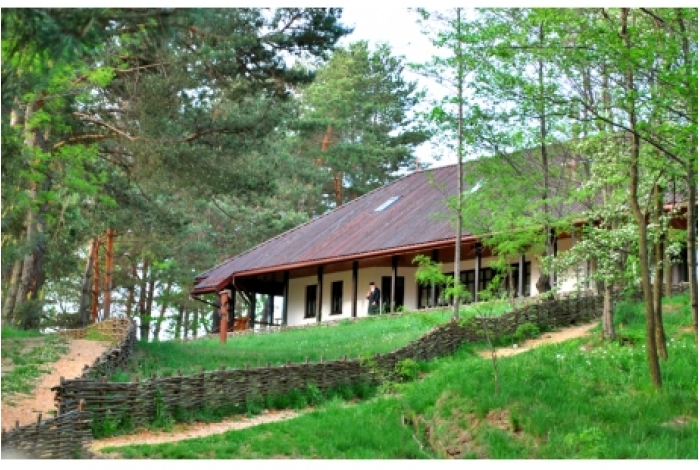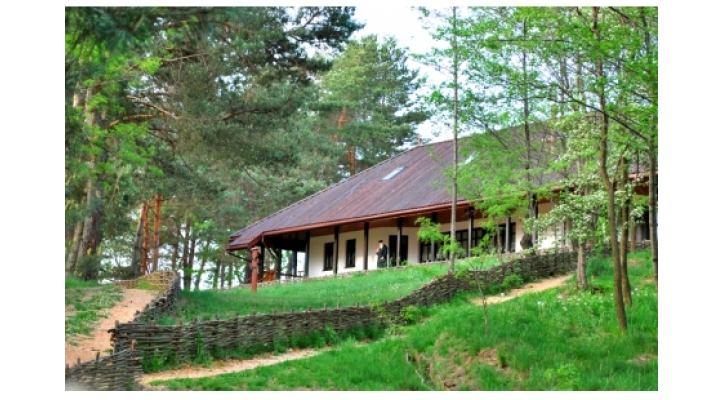Şinca Veche - Eternity Began At The Countryside
On this white morning of December, our red little car is heading North-West to Sinca Veche (“the Old Sinca”), a village located at 50 kilometers away from Brasov.

Winter tires are mandatory today, especially to cross the snowy train tracks, or later on, to leave the main road and engage on the trail for the last few kilometers towards the monastery. Along the way, we are passing a couple of long cooperatives, residues from the communist period. Still standing, they are mainly abandoned when not reconverted into sheepfolds. They reveal how nature treats man’s constructions when these are not maintained.
What would have subsisted of a centuries old monastery if it had been left over to nature?
This is the purpose of our journey today, visiting the famous ‘Cave of Sinca Veche’, splendidly rehabilitated through the last years by a Romanian Cultural Orthodox NGO.
The unclear origin of the cave
The generally accepted version is that the monastery was set-up around 1742, when the Orthodox churches were destroyed by the Austrian-Hungarians, enforcing the Romano-Catholic Church or the Greek-Catholic Church. However, Sinca Veche appears in documents from the early 12th century. Other assumptions suspect this sanctuary to be older than 7000 years, being founded by the Dacians. A controversy is fed by the presence of two altars inside the church, which is not common in the Orthodox faith and seems to indicate that the monastery does not have a Christian origin. Meaning of insignia on walls as well as the architecture also gives rise to diverging theories. Together with the village of Sinca Noua (“the new Sinca”), Sinca Veche has been an important bastion of resistance during communism.
A mystical experience inside the ‘Temple of the Fates’
In the early afternoon, we start our journey from a tall concrete cross, at the foot of the hill in which the cave has been built. Following a wooden fence we are walking up to the entrance of the cave.
The grotto is well hidden in the middle of the wood and in the heart of a block of grit stone.
We are penetrating in its womb.
A ten meter high carved chimney stands above our heads allowing the sunlight illuminate the entire place.
Invisible from the outside, this inner tower, with spiral like shape is said to let positive energy flow into the church. Its structure offers a connection between the sky and the earth, between the spiritual and the material worlds, which creates a vortex of energy inside the so-called “Temple of the Fates”.
It is considered by some as a holy place with miraculous powers.
Across the years some visitors have been coming here to get healed and have their good wishes fulfilled. We indeed notice some folded papers inserted into a rock slot, likely to contain some prayers. In the past some Christians were also leaving icons, clothes, water or food inside this cave. They believed that these would gather part of the tremendous power lying beneath the stone.
When collecting their items back, they were hoping to transfer a small part of the “earth soul” to their homes and in their lives.
Silence is respectfully observed, which enforces a feeling of stillness and contemplation.
Couple of wooden beams are consolidating some of the walls probably too much under pressure. This is part of the work that Maria Bagiu, and her Orthodox cultural foundation called "Holy Mother - Unexpected Joy", created in 2004, carried out to ensure the conservation of this place. When she discovered the cave it was drowned into the vegetation, with snakes as only owners.
Over time some rooms had collapsed due to natural pressure or infiltrations but also during search of hypothetical treasures.
Lately tourists vandalized the place by scratching walls or leaving garbage behind. Maria Bagiu managed to draw local attention, establishing partnerships in which Sinca Veche Hall leased the land considered as sacred, while Brasov County Council rebuilt the road from the village to the cave church. A geotechnical and geophysical survey of the site could be established in 2005, allowing envisioning technical solutions to strengthen the structure and preserve it over time.
The site is now classified as monument of national interest and has been transformed to welcome visitors.
The Saint's Nectarie monastery complex
We are getting out of the cave, back to the light after this mystical experience and pursuing our walk.
Passing by some huge monoliths, whose origins are uncertain, adds even more mystery to the place.
Further up, we are reaching a monastery complex, which celebrates its patron Saint's Nectarie, the Wonderworker. The door of the chapel is open for prayer.
A nun who stands at the entrance is displaying quality crafted items on a table, such as candles which can be burnt with thoughts to the leaving or dead beloved.
A service is about to start in the small chapel, whose walls are colorfully ornamented with paintings and relics. Outside a reservoir stores the holly water drunk by the nuns. A wooden board called ‘toaca’ is used in the morning to knock some rhythms accompanying prayers.
This living monastery emphasizes that religion is still actively breathing in this ancestral sacred spot.
“Eternity began at the countryside”
As we are walking back, Toparceanu’s words are resonating in our mind, emphasizing the message that the countryside is carrying the simplicity and essence of life through time.
It is thanks to the NGO "Holy Mother - Unexpected Joy" that spots holding a strong historical and cultural message, like Sinca Veche’s monastery, are still standing. Visitors can realize here what ancestors have accomplished, and what their beliefs, fears or hopes may have been.
On such “stones” left behind, a whole civilization continued building up and is still alive today. Realizing this continuity through the ages, stresses the necessity to maintain those memory places in shape.
While we are leaving with a deep feeling of peace and calmness, more visitors are arriving. It is also the success of this NGO to have revealed this remote site to the public, and promoted it in a way that it attracts walkers even in the winter, during a week day.
Text: Caroline Santamaria
Photos: Adrian Chiriac




